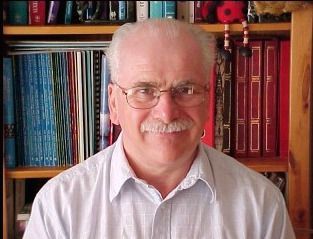
Title: Improving the interviewing of suspects
Plenary Talk
Prof. Bull Ray
University of Derby, United Kingdom
Abstract
The traditional method used with suspects is to interrogate them using an accusatory style, often from the beginning of the interrogation. Recent in research in several countries consistently demonstrates that a noteworthy proportion of guilty suspects have already decided to confess before the interview commences, and thus this traditional approach may be ‘seen’ to work for them. For other suspects new research suggests such an approach may well not be effective. A different approach was adopted over 25 years ago in England, which is now being adopted elsewhere (e.g. in Australia, Japan, Norway, USA). Instead of the seeking of confessions (that may provide very little information), this ‘new’ approach encourages suspects to provide as much relevant information as possible, the contents of which can be verified or challenged. Research on how best to elicit such information and when best to disclose to suspects information known to the investigators will be described.
Biography
Prof. Bull Ray currently working as Professor of Criminal Investigation, University of Derby. In 2018 Prof. Bull Ray was appointed to the Steering Committee that is responsible for the drafting of the ‘Universal protocol’ on investigative interviewing as recommended by the United Nations. Awards • In 2014 Ray became (for three years) ‘President’ of the European Association of Psychology and Law. He was until 2020 ‘Immediate Past President’ (for three years). • In 2012 Ray was awarded the first “Honorary Life-time Membership” of the 'International Investigative Interviewing Research Group' (that has several hundred members from dozens of countries). • In 2010 Ray was “Elected by acclaim” an Honorary Fellow of the British Psychological Society “for the contribution made to the discipline of psychology”. (This honour is restricted to no more than 40 living psychologists.) • In 2010 Ray received from the Scientific Committee of the Fourth International Conference on Investigative Interviewing a “Special prize” for his “extensive contributions to investigative interviewing”. • In 2009 Ray was elected a Fellow by the Board of Directors of the Association of Psychological Sciences (formerly the American Psychological Society) for “sustained and outstanding distinguished contribution to psychological Science” (FAPS). • In 2009 he received from the 'International Investigative Interviewing Research Group' the “Senior Academic Award” for his “significant lifetime contribution to the field of investigative interviewing”. • In 2008 he received from the European Association of Psychology and Law an “Award for Life-time Contribution to Psychology and Law”. • In 2008 he received from the British Psychological Society the “Award for Distinguished Contributions to Academic Knowledge in Forensic Psychology”. • In 2005 he received a Commendation from the London Metropolitan Police for “Innovation and professionalism whilst assisting a complex rape investigation”.

Title: Forensic Search on land & underwater
Plenary Talk
Peter Faulding
Specialist Group International, United Kingdom
Abstract
Peter is a leading forensic search specialist and has worked on many high-profile missing person cases and has located human remains and evidence on land and underwater that have gone undetected for years. In June 2007 Peter Faulding was called in by Lothian & Borders police (Operation Mahogany) to plan and conduct a full geophysical and forensic search of serial killer Peter Tobin’s former home in Bathgate, Scotland. The intention was to search for the remains of Vicky Hamilton who disappeared in 1991. The extensive search lasted over a week. While carrying out a detailed search of the loft, found a dagger was found concealed in the rafters. Following forensic examination, it was found to contain the DNA of Vicky Hamilton. This was the final piece of the jigsaw that the police needed to link Peter Tobin to the murders of Vicky Hamilton and Dinah McNicol who both went missing in 1991. Tobin was sentenced to life for their murders.
Biography
Peter Faulding is the founder & CEO of Specialist Group International (SGI), a world renowned company specialising in forensic search on land and underwater. Peter is a leading forensic search specialist and has worked on hundreds of cases, locating and recovering vital evidence and human remains in the remotest of places. Peter will give a photographic insight to many of the murder and missing cases he has worked on, including serial killer Peter Tobin.

Title: DNA typing for solving crimes against women and children
Plenary Talk
Prof. Anna Barbaro
Association of Women Forensic Experts, Italy
Abstract
DNA typing plays a crucial role in forensic individual identification and now represents the most important tool for solving forensic caseworks and biological relationships. DNA analysis in fact allows the identification of a victim, it can link an individual to a crime or can connect different crimes, can exonerate wrongfully accused individuals. In the last years and especially during lockdown due to COVID pandemic the number of family crimes and in particular of crimes against women and children is increased . The presentation is an overview about the advantages and limitations of DNA analysis, the importance of proper evidence collection, the technologies available, especially in case of sexual assault or family relationship reconstructions.
Biography
Anna Barbaro has completed her European PhD in Forensic Genetics (PhD) at University of Santiago de Compostela (Spain). She got a Diploma at the School of Specialization in Applied Genetics and a Master Diploma in Psychological and Behavioral Techniques of the Criminal Investigation at the University of Rome La Sapienza (Italy). She has published more than 150 papers, including conference presentation, she is Author of 3 technical Manuals and of some chapters in other books. She serves as President of the Worldwide Association of Women Forensic Experts, she is honor member of some scientific associations, she serves as reviewer for several international scientific journals and she is Member of the Editorial Committee of some international scientific journals. Invited speaker at various national and international conferences, organizer of courses and conferences about Forensic Sciences, member of the Scientific Committee of several courses and conferences.

Title: The role of charting dental anomalies in human identification
Keynote Talk
Dr. Jayapriya Jayakumar
University of Dundee, UK
Abstract
An increase in awareness on dental hygiene among people through the years consequently provoked a significant decrease in the occurrence of dental caries, and thus, a decrease in the number of dental restorations. This improvement of oral health affected the comparative dental analysis using dental treatments for human identification; hence, existing dental features or anomalies could act as unique identifying features. This study evaluated the awareness of dentists on charting dental anomalies by a dental charting task and addressed the importance of maintaining dental records for forensic and medico-legal purposes. An online survey-based study was conducted on 101 dentists practicing in the South Indian states of Karnataka, Kerala and Tamil Nadu through Google Forms (© 2019 Google Inc., v 0.8). Results showed that clearly visible anomalies such as midline diastema, crowding, and transposition were mentioned by only 11.8 %, 22.7 % and 5.9 % of the respondents respectively. 17.8 % misnamed the accessory cusp on a premolar as a Talon’s cusp. The awareness of Forensic odontology among dentists was exceptional but the dental charting needs improvement. A “Scale of Forensic Significance of Dental Features” was created to interpret the accuracy in recording anomalies which comprised of three parameters namely: Incorrect answer(0 %), Partially Correct answer(50%) and Accurate answer(100%). They classify different levels of forensic significance of dental findings in human identification. Only a few respondents submitted an Accurate or a Partially Correct answer and, as a result, an Atlas of Dental Anomalies (www.theatlasofdentalanomalies.com) was created to rectify poor dental charting.
Biography
Dr. Jayapriya Jayakumar is a PhD candidate from the Centre of Forensic and Legal Medicine and Dentistry, University of Dundee, UK and completed her Master’s in Forensic Odontology from the same institution in 2019. She is currently working as a Forensic Odontologist in Scotland and is working in the field of research, conducting lectures/workshops in UK, Europe and Asia, and providing an expert-level opinion in cases of Human Identification, Age estimation, Bite mark analysis and Malpractice. She has also published articles and is a member of editorial boards in reputed journals.
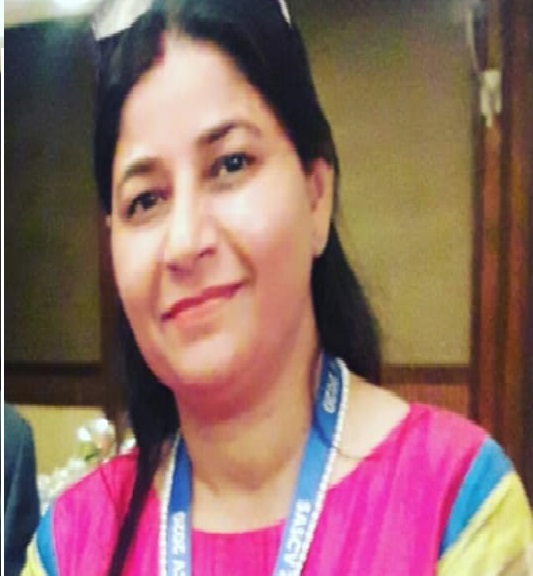
Title: VARIOUS DIMENSIONS OF FORENSIC LABS IN INDIA: CHANCES OF GROWTH FOR RESEARCH AND DEVELOPMENT & BUSINESS CRITERIA
Keynote Talk
Dr Rakhi Khanna
State Forensic Science Laboratory, Jaipur, India
Abstract
In India after Nirbhaya Tragedy Central Govt. takes many steps to strengthen issues related to atrocities against women. In these criteria Central govt. issues fund to state laboratories to develop infrastructure for DNA Analysis, Cyber Lab development and to provide trainings to all branches of forensic. It takes concern of all social forums to take more interest in Forensic field and result in development of Gujarat Forensic Science University into National Forensic Science University, India. This step provides students and researchers to work and develop for the forensic science. It brings into consideration training to working personnel about use of crime kits for proper collection, preservation of scientific evidences followed by forwarding them to labs for specific opinion and then needs advance examination using sophisticated techniques to solve mysteries. Separation techniques and their identification is prior requirement for producing report and sent back to concern authority as Police in our states and further they are produced in court of law, where scientific reports have concrete value to decision. In one case it took seven years for a seven year old girl who was brutally murdered and Raped by the criminal. Where a single case of rape and murder involves toxicological, biological, serological, cyber and DNA Analysis, the use of mobile phones provides digital evidences in cracking facts about the circumstances and further reconstruction of crime scene needs excellence in R&D. This all opens wide criterion for companies to develop instruments and techniques to strengthen analysis according to laboratory needs. The challenges show lot of discrepancies and known to the forensic scientists only who are working day and night on the cases. Specific instruments bring reliability of results and expertise of experts used in Ballistics, Documents, Physics and Toxicology.
There is steep rise in incoming cases at FSLs in all sections but rising scenario indicates the future requirement in DNA advancement techniques and cyber crime analysis which comes as big challenges. There is steep rise in cases of Rajasthan lab from 2013 from approx 26000- to 44000 in 2019.
Where in countries like USA there is a backlog of cases related to DNA in POCSO cases, In India various laboratories are analyzing thousand of cases in a year. In present Presentation I would highlight various cases of Rape, Murder, Toxicology, Reconstruction and crime clues and use of Kits and training that help in getting excellence in Reporting all such cases.
The use of instrumentation techniques as GC-MS, EDX-8000, RT-PCR, Gene sequencer, Elisa Reader etc, provides heights of excellence in reporting specific cases.
Biography
Dr Rakhi Khanna is presently as Deputy Director Training at State Forensic Science Laboratory, Jaipur, Rajasthan, India. As Head of Toxicology section Analyze more than 10 thousand cases. Manage Analysis and Reporting of Poisoning cases, Produce Reports in time, Give evidence in court, Adoption of new innovative techniques of analysis according to specific cases. Performed Research work in many cases. President of Internal Complaint committee of Prevention, Prohibition and Redressal Act against sexual harassment of women at workplace, 2013. Has wide experience of analytical and administrative work as DDO, Building construction of new building, Development of new Laboratory and Toxicology Division at Ajmer, Attend conferences, sending papers in conferences, taking invited lectures. Working experience of 22 years as Forensic Scientist cum Toxicologist from 1998 and have experience of analyses of large number of cases. approx. 20,000 cases and 60000 exhibits are reported.
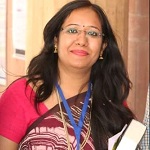
Title: AI As An Investigative Tool In Forensic Science
Keynote Talk
Vinny Sharma
Galgotias University, India
Abstract
The world of crime has been growing at a much faster rate than predicted by survey analysis. Along with the growth the perpetrators are also becoming smart and have been employing technology to commit their misdeeds. Forensic science being an important leg of the criminal justice system chair needs to become smart too, for the purpose of making the judicial system fast, precise and more efficient. Artificial Intelligence along with its sub-branches can assist the forensic experts to provide accurate and faster means of analysis of evidences.
Artificial intelligence, machine learning, deep learning all together can not only help in reducing the error in analysis but will also be able to help the investigators to pursue their investigation on a righteous path. This is due to the reason AI imitate the cognitive thinking of humans - learning and problem solving. More precisely the ANN – Artificial Neural Network holds most applications in the field of forensic science, including crime scene reconstruction, pattern recognition, voice identification, vehicular accident investigations, cyber forensics – data recovery and acquisition, remote data analysis etc. Apart from artificial intelligence being a investigative tool it can also help in creating a evidence repository too. Also artificial intelligence holds immense application in the evidence presentation in the court of law by usage of virtual reality an augmented reality.
Biography
Mrs. Vinny Sharma, Assistant Professor, Forensic Science, Galgotias University, India. She has expertise in Finger-Prints, Questioned Documents, Online Character Recognition and Artificial Intelligence. She has also been invited as speaker, guest speaker and keynote speaker in various national and international conferences and webinars. She has 2 patents credited to her, specifically in AI in forensic science. She has also done her training on Stakeholder Engagement for the Implantation of the United Nations Convention against Transnational Organized Crime (UNTOC) organized by UNODC (United Nations Office on Drug and Crime. She is also an appointed Innovation Ambassador, Galgotias University, for IIC an initiative of Ministry of Education, Govt of India.
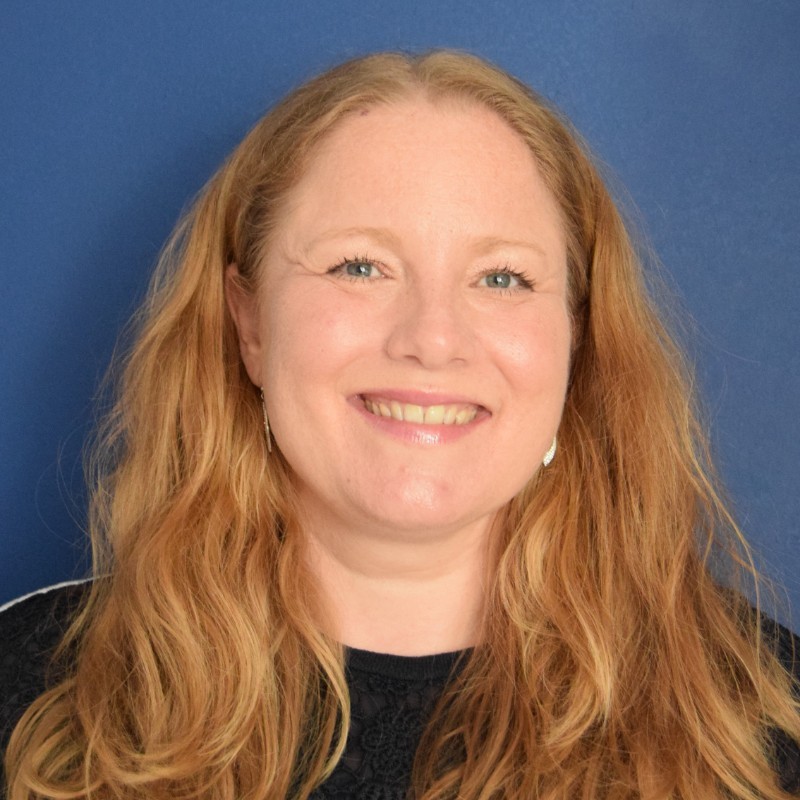
Title: Forensic Awareness for the First Responder
Keynote Talk
Angela Davies
Crime Scene Assist Ltd, United Kingdom
Abstract
Forensic Science plays a vital role in the detection of crime and the administration of justice. Evidence recovery starts at the crime scene. There is only one opportunity to recover it, therefore, the actions of the first responders in attendance can make or break an investigation. Despite this, first responders and other professionals who encounter Forensic evidence as part of their role, don’t always receive adequate Forensic Awareness training. Crime scene contamination and loss of evidence due to poor preservation methods are key issues in an investigation. Therefore, it is imperative that anyone interacting with crime scenes, should have a basic knowledge and understanding of their environment and be able to make a substantive effort to maintain scene integrity. No matter how well trained or competent your CSI’s and Laboratory Scientists, if the first responder has not protected the scene, you will not get best evidence for the investigation. Responders have their own remit when attending an incident. Preservation of life is paramount and must always come first, with evidence preservation or recovery thereafter. However, with the right tools and training, the two do not need to be mutually exclusive objectives and forensic preservation can be automatically integrated into practice. As such, there is a new learning tool on the market. A Forensic Awareness App which can be utilised as an aide memoir. The App is the first of its kind and has evolved as a direct result of the authors experiences, working as Forensic Practitioners, Disaster Responders and Trainers.
Biography
Angela holds a 1st Class Honours Degree in Crime Scene Science and an MSc in Mass Fatality Management and Victim Identification, from Teesside University, NE England, UK. She started her practitioner career in Forensics as a CSI for Northumbria Police, NE England, before going on to co-found CSI Training and Events Ltd in 2012 and later, its digital sister company, Crime Scene Assist Ltd in 2019. She has a wealth of experience in practical scene work, Disaster Response, Business and Education. She has developed and delivered training, lectures, workshops, and events, for a multitude of audiences, both nationally and internationally.
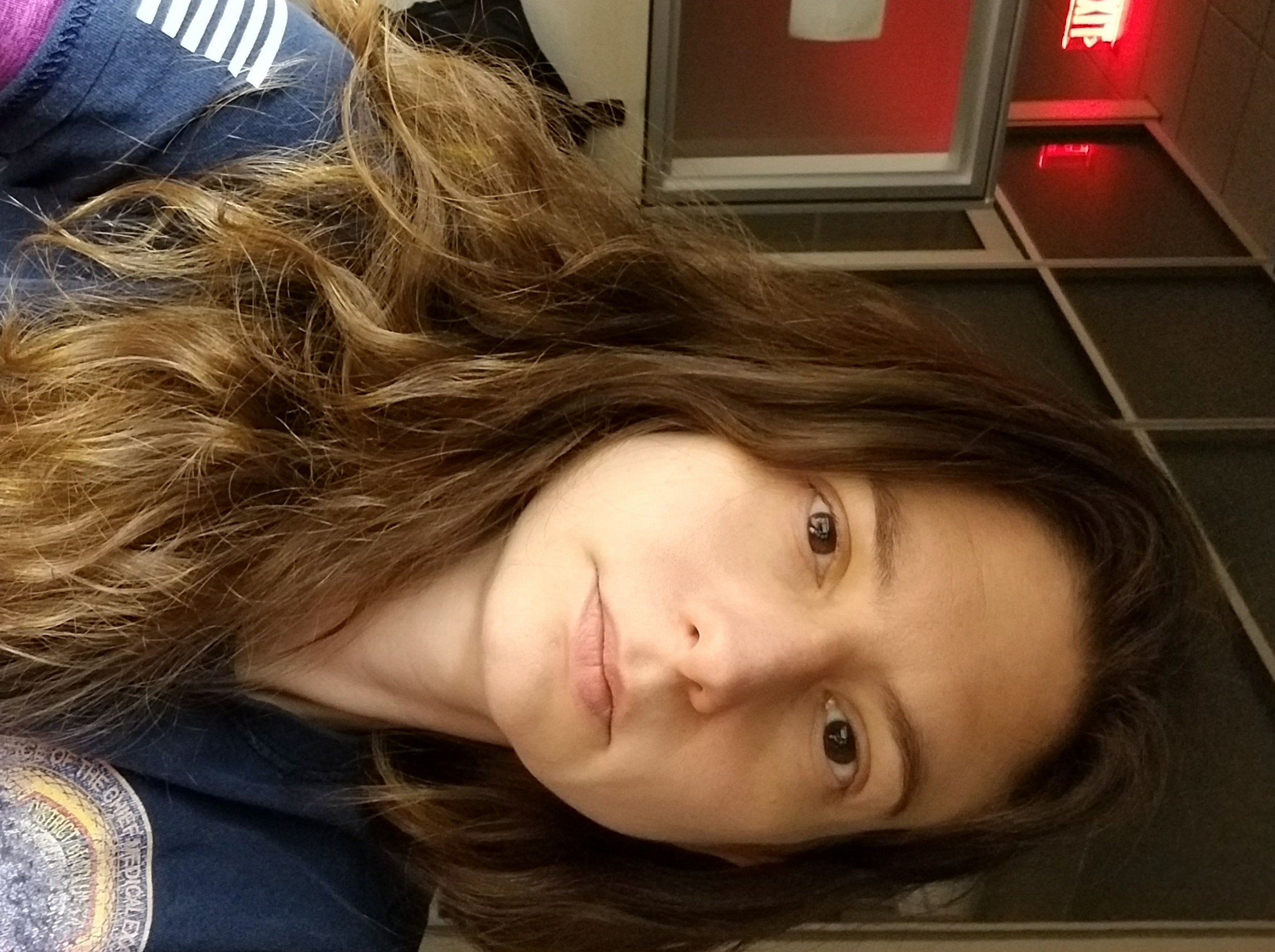
Title: Forensic Death Investigation – Wait, it’s Not Like TV??
Ms Julie Wolf
Forensic Death Investigator, United States
Abstract
In forty-five minutes, a popular TV show actor, who is usually identified as a Detective, Crime Scene Investigator, or lab personnel, can respond to a murder scene, investigate it, interview witnesses, use computer technology that beeps a lot, and solve the murder. The Medical Examiner is portrayed as a gruff, macabre introvert with no personal skills in dimly-lit morgues with no auxiliary staff who only performs autopsies on pristine bodies at night. Does this happen in real life? NO! This presentation will show you what the life of a death investigator is really like in the United States. While these types of shows are great for entertainment, they certainly don’t reflect reality. Let’s take a walk through some real life scenes and see how a death investigation is actually conducted.
Biography
Julie Wolf has dual bachelor’s degrees in Forensic Science and Chemistry. She has held positions as a Medicolegal Death Investigator for the District of Columbia, Snohomish County (Washington State) and the State of Connecticut, as well as an Identification Investigator with the New York City Office of Chief Medical Examiner. She is also a medical investigator for the United States Department of Health and Human Services Disaster Mortuary Operations Response Team (Region III).
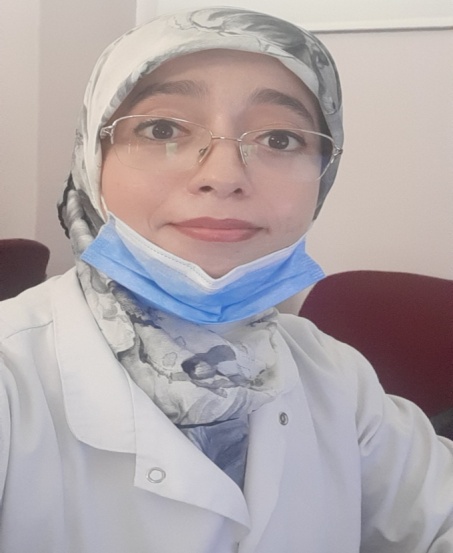
Title: Gender-based violence Assessment: Moroccan Medicolegal Institute Experience
Dr. Hind ABOUZAHI
University Hassan II, Morocco
Abstract
Gender-based violence (GBV) refers to any harm perpetrated against a person’s will on the basis of gender. Around the world GBV and environmental degradation and instability are among society’s most pressing challenges – each with complex drivers and widespread impact. .
Given pervasive gender inequalities that almost universally affect women’s unequal access to resources and rights, a majority of GBV victims are women. It is widely cited that one in three women will experience GBV at some point in their lives, but these estimates are conservative due to widespread underreporting, and in many countries the proportion of women experiencing violence is much higher.
GBV encompasses many different expressions of violence, including: physical, sexual and emotional abuse sexual harassment; stalking; rape, including “corrective” rape and rape as a tactic of conflict; domestic violence and intimate partner violence (IPV); child marriage; human trafficking; and female genital mutilation.
Here, we report the Moroccan Medicolegal Institute experience in fighting against GBV.
Biography
Dr. Hind ABOUZAHIR graduated from Public Medical University, she finished Forensic Medicine Residency training at the Medico-legal Institute, and became specialist doctor of Forensic Medicine. She was trained on the management of dead bodies and the identification of victims of mass disaster at the African School of Humanitarian Action, and at the Berlin Institute of Forensic Medicine and Forensic Sciences. She is a part of MLDI CoP Monthly Call group training programs, she Participating as keynote speaker at many congresses and conferences. She has published papers in reputed journals. She is Assistant Professor of Forensic Medicine at Casablanca Medical University.
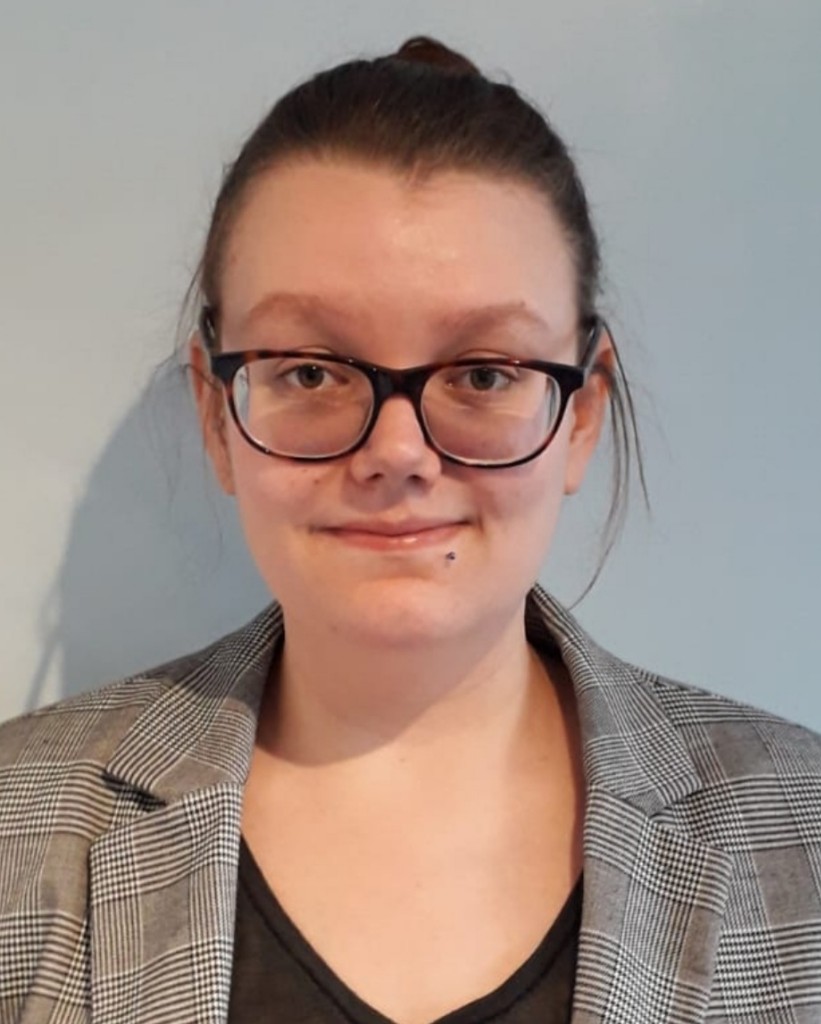
Title: The Design and Optimisation of Primers for a Reverse transcription quantitative real-time PCR (RT-qPCR) Assay to detect Genes contributing to Wound Age Estimation
Z M Tucker
University of the West of England, UK
Abstract
Wound age estimation is important because it aids in reconstructing crime-scenes and identifying the timing and/or order of sustained injuries. However, accurate determination of time since wounding remains a challenging issue within forensic pathology. This is due to histopathological examinations not providing accurate age estimations, because of limitations in the availability of background information relating to autopsy samples in casework. Most attempts at wound estimation thus far have been limited to autopsy or tissue samples. These samples have little information relating to the age and sex of the deceased, cause of death, severity of the injury and environmental conditions, all factors which can affect wounding. Previous research to determine wound age with increased specificity and accuracy determined that cytokines are the target of choice due to their role in the inflammatory pathway activated by wound healing. The mRNA levels of cytokines typically change sooner than protein levels making them a more suitable target for estimating the age of early-stage wounds. Furthermore, different cytokines are expressed at different stages of wound healing and therefore expression levels change dependent on the time since wound infliction. Gene expression levels can be easily assayed using RT-qPCR to detect and amplify mRNA transcripts. The aims of this project is to design and optimise a panel of RT-qPCR primers which can target mRNA and gene expression of relevant cytokine targets. These cytokine targets (CD14, CD32B, CD68 AND CD15 and CD62p) have been chosen as they may determine the time since wounding interval from 0-21days.
Biography
Miss Z M Tucker has been studying her Msci Forensic Science at the University of the West of England, Faculty of Health and Applied Sciences, Frenchay campus, Bristol, UK. This has been undertaken over the last four years with a specialism in Forensic Biology established since her second year of study.
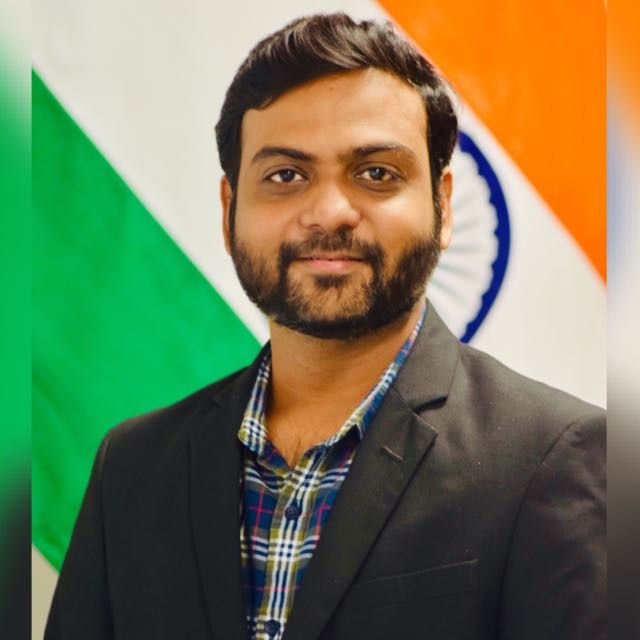
Title: Social Media Cyber Crime forensics and Investigation
Dr. Ravi Sheth
Rashtriya Raksha University, India
Abstract
The use of social media by both individuals and organisations has grown immensely in the past few years, fuelled by a combination of greater internet access and smart mobile devices. The three most popular websites, Facebook, Twitter and Instagram, are regularly used by many millions of people, all with the purpose of ‘social networking’, connectivity, enabling people to express themselves and interact – using the internet as a platform for doing so. However, a minority of those in society using social media create problems that may come under the umbrella of criminal liability. The application of computer investigation and analysis techniques to gather evidence from online sources and social networks suitable for presentation in court of law is known as social media forensic and investigation. In this topic will discuss the social media crime committed using Facebook and what would be the role of investigator officer and how a cyber criminal can be caught using investigation process.
Biography
Dr. Sheth is having more than 11 years of teaching experience. Currently Dr. Sheth is working as Assistant Professor in School of IT, AI and Cyber Security at Rashtriya Raksha University, Gandhinagar. His keen area of interest is in multimedia security, machine learning, pattern recognition, VAPT and Cyber Forensics. He has a conflate of combined experience in teaching , research and training. Dr. Sheth has organized several high quality training and extension programs for the law professional, teachers and students from across the India. He has published more than 40 research articles in international refereed journal in the area of cyber security, cyber forensics and artificial intelligence. He has presented more than 10 research papers in national and international conference. He has delivered more than 15 expert lectures on various aspects of Multimedia Security, Social Media Investigation, Cyber Forensics, Pattern Recognition and Darknet Investigation for the law professional, teachers and students from across the India. He has registered a pattern for a “Portable mobile forensic data acquisition tool”. He is providing research guidance to PhD and M.Tech students of Rashtriya Raksha University in the area of Cyber Security, Cyber Forensics, Machine learning and pattern recognition.
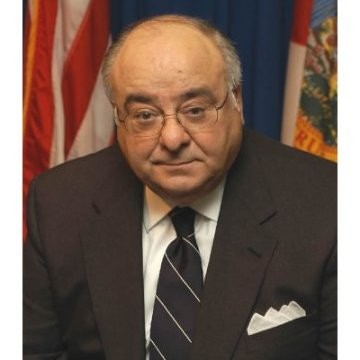
Title: American Society of Criminology: Bringing Research to Policy Makers and Practitioners
Plenary Talk
Dr. Anthony Schembri
Former Police Commissioner, New York, United States
Abstract
The research profession needs to catch up with policing, corrections and juvenile justice, and define a role for itself in the problem solving process. The research community needs to find ways to bring its analytical skills, its objectivity, its rigor, its independence, its ability to link theory and practice, into the messy arena of contemporary practice. Although we have made progress, the need is tremendous.
Biography
Anthony Schembri is a respected law enforcement and academic professional with over four decades’ experience in the field. Over the years, he has drawn praise from such varied sources as New York City Mayor, President Jimmy Carter, Florida Governor Jeb Bush, and New York Governor Mario Cuomo. First appointed to the Brooklyn District Attorneys Office he advanced to Deputy Chief of the Narcotics Bureau, then to Director of Training at the District Attorneys Police Academy. Anthony Schembri has served as the city’s Deputy Inspector General, investigating cases of major crime and corruption. He was appointed by the Mayor of New York as Corrections Commissioner, a position putting him in charge of 12,000 uniformed officers and 20,000 inmates at 19 separate jail facilities. Today, the Citrus County, Florida, resident serves as a Visiting Professor at Oxford and Sheffield Hallam University and named Outstanding Professor of the Year at the University of Florida.
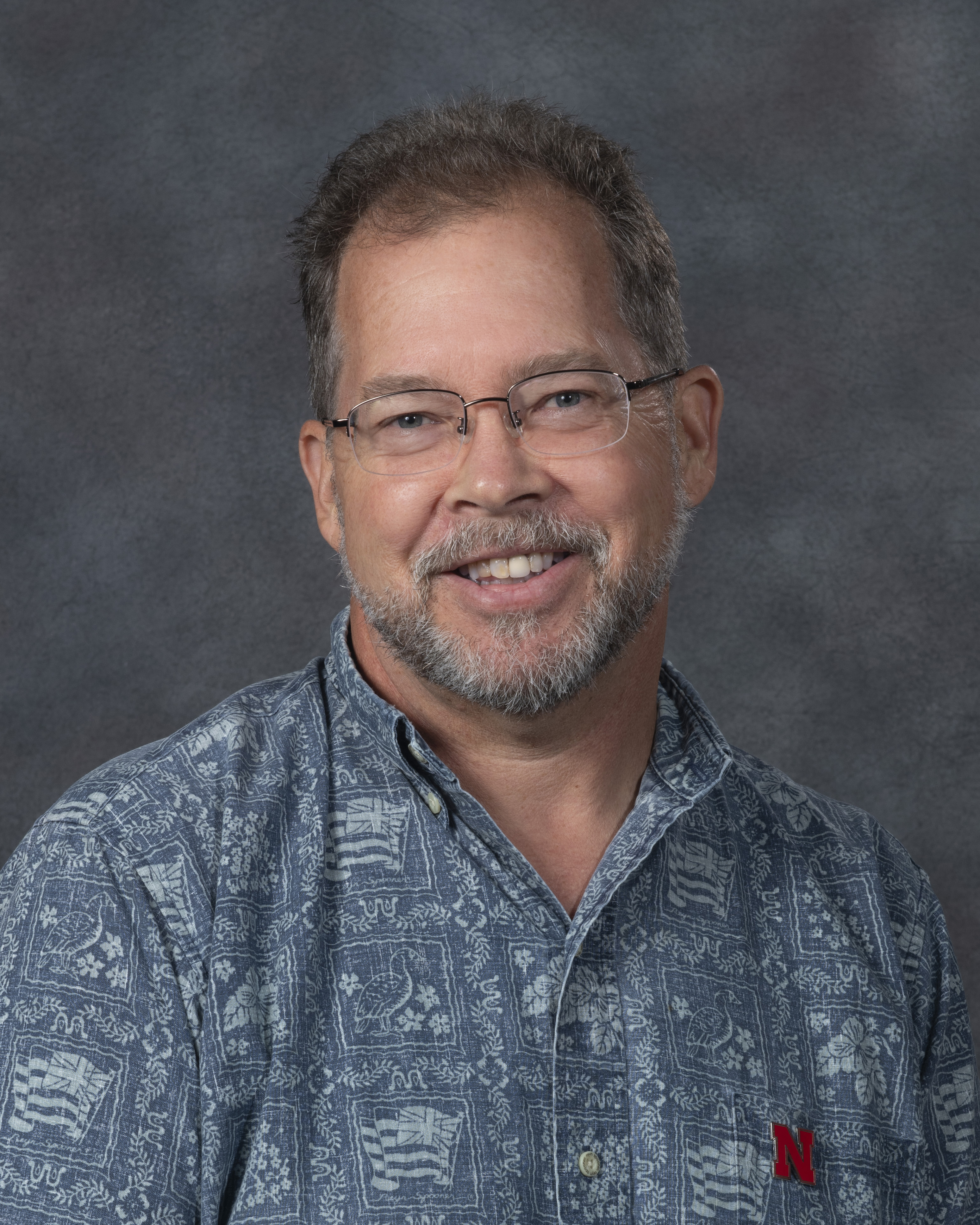
Title: Forensic Archaeology: A New Tool for Forensic Scene Investigation
Plenary Talk
Dr William Raymond Belcher
University of Nebraska-Lincoln, USA
Abstract
Forensic archaeology is a relative new branch of the forensic sciences that ties archaeological methodologies with outdoor forensic investigation and “cold cases”, such as World War II military losses. Standard archaeological practices are used to recover information related to the recovery of human remains and material evidence to establish the identification of individuals and return to the families for burial or cremation. While forensic crime scene investigators are extremely versed with indoor evidence and collection, the outdoor environment creates special problems that are really the goal of archaeological training including post-mortem modification to the remains (taphonomy) as well as modification of the landscape to include burial, stratification, and tool mark analysis in the soils. A few case studies will be used drawn upon the author’s experience with the recovery and identification of US war dead from World War II and the Korean War.
Biography
William R. Belcher, PhD, D-ABFA is an Assistant Professor in the School of Global Integrative Studies/Department of Anthropology at the University of Nebraska-Lincoln (UNL), USA. Dr. Belcher is a board-certified forensic anthropologist and is developing the forensic anthropology and forensic archaeological graduate program. Prior to joining the faculty at UNL, Dr. Belcher served as a forensic anthropologist with the United States Department of Defense, where he retired after 21 years of service. Dr. Belcher has conducted forensic investigations related to World War II, the Korean/Cold War, the Vietnam Conflict, and the Gulf War in countries such as the USA, the United Kingdom, Germany, France, North Korea, various Pacific Island nations and Southeast Asia (Laos, Vietnam, and Cambodia).
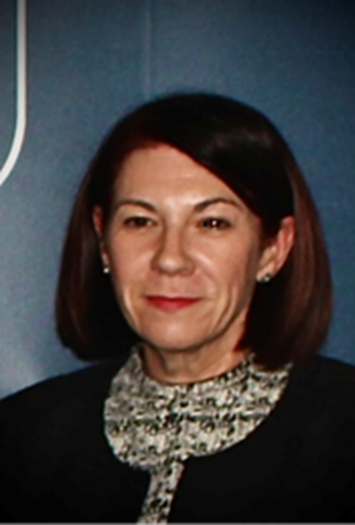
Title: Delivering the Forensic Capability Network (FCN)
Plenary Talk
Prof. Vickie Burgin
NPCC Forensic Capability Network, United Kingdom
Abstract
The FCN, which went live in April 2020, is a new way of working, committed to harnessing collective forensic science efforts, to transform the forensic science landscape so that our forensic science capabilities can be greater than the sum of their individual parts, helping us to deliver first-class policing and law enforcement services that our communities deserve.
At the heart of the FCN is the desire to work together as a national network to deliver high quality, specialist forensic science capabilities; to share knowledge; to improve resilience and effectiveness; to drive efficiencies; to harness enabling technologies and innovative solutions to the problems of tomorrow, today and enable policing to adapt to an ever-changing landscape to keep our communities safe.
Consisting of 3 main elements; People, Services and Technology, the FCN Core Team, through the 4 Pillars of Science, Quality, Commercial and Operations, will enable policing to benefit from a level of collective investment and support never been possible before.
Biography
Vickie Burgin is a Senior Leader within Policing, having over 27 years’ experience in the application of Forensic Science within operational policing, across all levels of criminality. As Director of Science for FCN, providing support and coordination to 43 police forces across England and Wales. Having responsibility for national portfolios, with a passion for driving change to deliver best practice with quality embedded at the heart of forensic science and operational investigations.
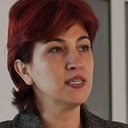
Title: ETHICAL ISSUES IN RESEARCH ON HUMAN CORPSES
Keynote Talk
Prof. Beatrice Gabriela Ioan
Grigore T Popa University of Medicine and Pharmacy of Iasi, Romania
Abstract
Over time human corpses have been precious resources for research and teaching, contributing to the progress of medicine and society. The research on human corpses has diversified over time, coming gradually out of the medical sphere. Material and method. The authors made a literature review analyzing the ethical issues that arise in research on human corpses in different contexts in which human corpses may be used. Results. The ethical issues in research on human corpses stem from three crucial questions: What is the statute of a human being after death? Is it still a person or should it be treated as a person? Who decides the fate of a corpse? Conclusion. The ethical foundation of research on human corpses is represented on one hand by the balance between the potential benefits of the research and the moral obligation of the researchers towards the deceased and on the other hand by the harmonization between the respect to persons and the interest of society.
Biography
Beatrice Gabriela Ioan is Professor of Legal Medicine and Bioethics at “Grigore T. Popa” University of Medicine and Pharmacy of Iasi, Romania, She also serves as forensic pathologist at the Institute of Legal Medicine of Iași. She graduated from the Faculty of Medicine in 1993, the Faculty of Psychology in 2002 and the Law Faculty in 2012. In 2004 she graduated from the Master Program in Bioethics at Case Western Reserve University, USA. She is a member of the Committee on Bioethics of the Council of Europe and its former Chair and a member of the International Bioethics Committee- UNESCO.
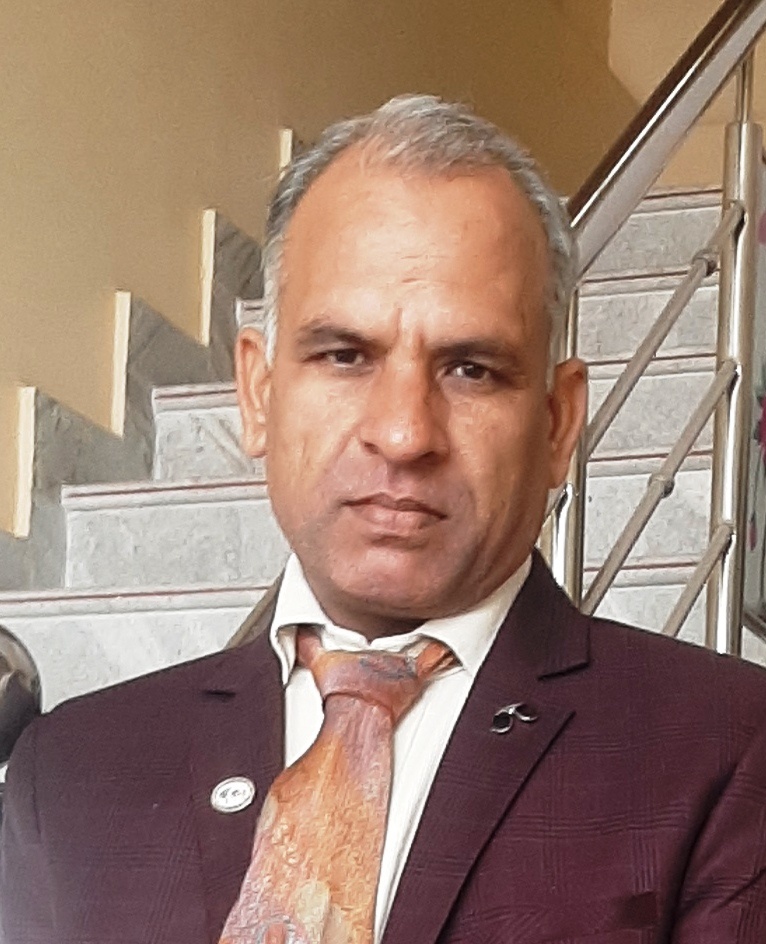
Title: Forensic Psychology and its application present scenario: cases study
Keynote Talk
Dr. Mukesh Sharma
State Forensic Science Lab, Jaipur, India
Abstract
The field of forensic psychology has been growing in prominence in the past couple of decades. Psychology is used to detect the deception of the persons are involved in many areas that relate to crime, both solving crime and absolving people wrongly accused of committing crimes. The goal of lie detection is the discovery of a truth that is known to one person and concealed from others. Psychophysiological lie detection, or polygraphy, is based on the theory that lying produces particular emotions, which produce corresponding measurable physiological responses.
Modern polygraphy measures blood pressure, breathing, and skin conductance. Alternative metrics such as voice stress analysis and functional magnetic resonance imaging are as yet unproven. The control question test uses relevant, control, and irrelevant questions. A larger response to the relevant questions is considered evidence of deception. The guilty knowledge test uses concealed information questions and irrelevant questions.
Through this article authors have tried to report that how the polygraph examination of real cases is important and helpful to the investigating officer, using our three cases study, results are demonstrated.
Biography
Dr. Mukesh Sharma (M.Sc. Ph.D.), Senior Scientific Officer, Physics Division. He has completed his Ph.D. in the field of Material Science, now working as SSO, in Forensic Science. He has been involved in the field of forensic science since 2008. He has published more than 90 research articles in International/National Journals/ Conferences/Magazines. His fields of research are Trace evidence analysis, Forensic Physics, Cyber Forensic/Digital Forensic and Crime Scene Management. He has been nominated as Leading Scientist of the World 2010, from IBC, England and Asian Academics Achievers, New Delhi. His expertise in instrumental measurements on XRD, XRF, SEM and GRIM used in Forensic trace evidences analysis. Dr. Sharma is the fellow member and life member of National/International renowned societies as IANCAS (India), ISRP (India), ISOI (India), IXAS (Italy), IACSIT, (Singapore: Fellow Member : 80341901), ISCMNS (England) , SASCV (India) , UACEE (Thailand) and SDIWC (Taiwan) etc
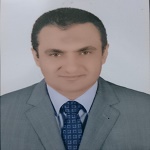
Title: Cyber terrorism in the age of covid 19
Keynote Talk
Prof.Hossam Nabil Elshenraki
Dubai Police Academy, UAE
Abstract
What do we know or anticipate that terrorists want to do in cyberspace? the answers to this question fall into three categories:
to support their activities and infrastructure, but not directly through an attack
to explicitly attack parts of the cyber infrastructure
to use cyberspace as a means of attacking other targets
It is certain that terrorists and their supporters have been engaging in extensive activities under category 1, and that they will continue to do so.This would cover communications, including encrypted communications with each other; recruiting and “advertising” and financial transactions such as money transfers and laundering. They are also likely to be scouring cyberspace for information on potential targets and on weapons of mass destruction.
Examples of attacks under category 2 include massive distributed denial of service (DDOS) attacks to bring down parts of a national or international information infrastructure for the purpose of humiliating governments or other parties , and precision strikes against the communications of selected targets during intense crisis periods. Note that cyberspace can be attacked physically–by cutting communications lines or blowing up switches or computers with critical databases–as well as cybernetically.
Possible attacks under category 3 would include compromising transportation or other supervisory control systems to cause disasters resulting in extensive consternation and costing many lives . Cyber attacks might also be launched in conjunction with more traditional forms of terrorist attacks in order to severely exacerbate the consequences. For example, interference with the communications of emergency responders might occur during a biological attack.
There have been several malicious attacks, accidents, and experiments via the use of red teams or simulations that convince many people that very serious attacks under categories 2 and 3 are possible. These include both “broadcast” attacks like those now commonly associated with viruses, and more precise, focused, sustained, and sinister attacks. We have yet to see the latter in a truly devastating form.
Biography
Associate Prof. Hossam Elshenraki Current Position: Associate Professor in Criminal investigation –Head of policing management &Social Sciences section – Dubai Police Academy Carrier history: - Criminal investigation: officer – Head of Unit – Head of Department from (1992:2004) - Cybercrimes investigation officer(2004:2012) - Police Sector Commander in united Nations Mission in Darfur(2012:2015) - Head of Cybercrimes Criminal investigation Department in Ministry of interior in Egypt(2015:2018) - Assistant Professor in Criminal investigation – Dubai police academy Research Experiences: - Published (7) researches in Cybercrimes field in law and police academies magazines ( Sharjah police academy – Egypt police academy- Egypt school of law ) Academic Experiences: - Lecturer in Egypt police academy in ( raising awareness in the field of using internet ) - Lecturer in Police College (Cybercrimes investigation )for second grade with a book - Lecturer in police training institutions in the field of ( Cybercrimes investigation) - Assistant professor in criminal investigation – Dubai police academy Social Activities: - Lecturer in “The program of protecting children on line”( for teachers – students- staff of schools) - Member of the Arab League of cyber security in Lebanon related to The Arab committee for Arab Ministries of justice - International trainer in the field of Cybercrimes investigation & criminal methods on the internet - A book by (IGI GLOBAL)on Cyber Children exploitation - Member in the official technical committee for preparing the cybercrimes law in Egypt - Member in the official technical committee for preparing the Personal Data Protection law in Egypt - Awareness lectures for school students & university students about cybercrimes and how to avoid to be a victim in Egypt & Dubai Conferences: - Contribute with work papers in more than (15) conferences in Egypt , Lebanon and Dubai in the field of cybercrimes investigation & Data protection by official institutions such( ITU-ARAB LEGUE – EGYPT MINISTRY OF COMMUNICATIONS – UNIVRSITIES IN EGYPT)

Title: The role of the forensic pathologist in effective communication with the bereaved family
Ms. Bianca Hanganu, Ms Manoilescu Irina Smaranda
Grigore T Popa University of Medicine and Pharmacy of Iasi, Romania
Abstract
Introduction
Daily practice of the forensic pathologist involves a wide range of cases: from newborns to the elderly, from sudden deaths to violent and suspicious deaths, from natural deaths to murder, accidents and suicides.
Material and method. The authors made an analysis of the literature to identify the particular aspects of communication between the forensic pathologist and the family of the deceased, in order to achieve effective communication.
Results. Death is one of the most disturbing events, which creates a powerful emotional charge among family members. These all the more as death occurs unexpectedly and seemingly inexplicably. In these situations, the need to know why the loved one died and to receive answers to questions (often about pain), in a clear, honest and empathetic manner, is often essential for the peace of family members, and the forensic pathologist is in the best position to offer comfort to the family. Effective communication in medicine is fundamental, but it is not an easy task, especially when it is about death. Under these conditions, the provision of information must be done in a comfortable space, carefully measuring the amount of information as desired by the family. Sometimes communication with family members can also play a role in clarifying the cause of death - by providing particular details about the victim's life or preventive role - when the autopsy results require screening the family for hereditary diseases.
Conclusions. The role of the forensic pathologist in effective communication with the bereaved family is multiple, from alleviating suffering to clarifying the cause of death and preventing early deaths.
Biography
Bianca Hanganu is a forensic pathologist, specialist physician and assistant professor in Forensic medicine at Grigore T Popa University of Medicine and Pharmacy of Iasi. She attended many international scientific meetings were she presented her work and has published various papers in the field of forensic medicine, bioethics and medical communication, her main areas of interest.
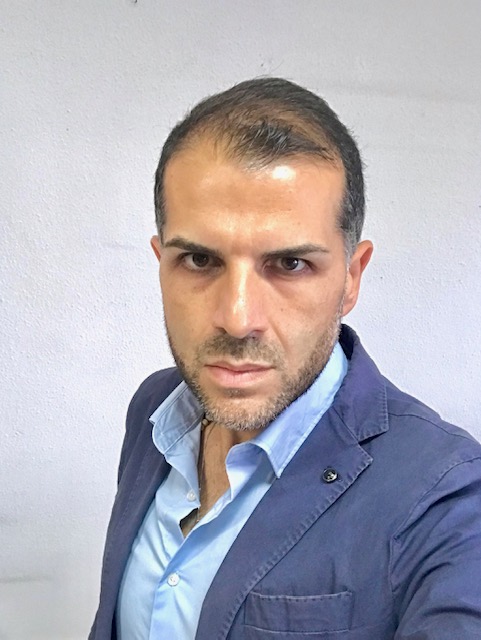
Title: The concept of «geographic crime scene» applied to serial crime investigation
Domingo Magliocca
Geographic Profiling Analyst, Italy
Abstract
This presentation describes the investigative technique for applying geographic profiling to investigation. Essential elements of investigative crime analysis are introduced including Locard’s Exchange Principle applied to concept called «geographic crime scene», the practical application of geographics in criminal investigations, and how geographics can approximately reduce the area of investigation and assist the police agencies.
Biography
Dr. Domingo Magliocca is a Certified Geographic Profiling Analyst serving in Italy as a police officer assigned at Judicial Police Section of local Public Prosecutor's Office for criminal investigation activities. He has a Bachelor of Arts Degree in Security and Social Control Operator, a Master’s Degree in Applied Criminology for Investigation and Security from University of Bologna, and a Master’s Degree in Law from the University Telematica Pegaso. Domingo is author of books “Tracce geografiche criminali. Teoria e tecnica del Profilo Geografico” (Primiceri Edition, 2020), “Introduzione al crimine violento. Criminal profiling e classificazioni pratiche (Primiceri Edition, 2020), “Profilo Criminale. Analisi integrata del luogo del delitto” (Primiceri Edition, 2019), “Il delitto di atti persecutori - stalking” (Primiceri Edition, 2017), and of specialistic papers about stalking, crime scene, law, geographical offender profiling. He was a board member of journal "Intelligence & Storia Top Secret", Peer Reviewer of international scientific journal "Universal Journal of Psychology". Domingo is a collaborator of technical-juridical journal "Sicurezza e Giustizia", as well as speaker in international forensic science conferences. He is a honorary member of Bolivian Forensic Sciences Society.
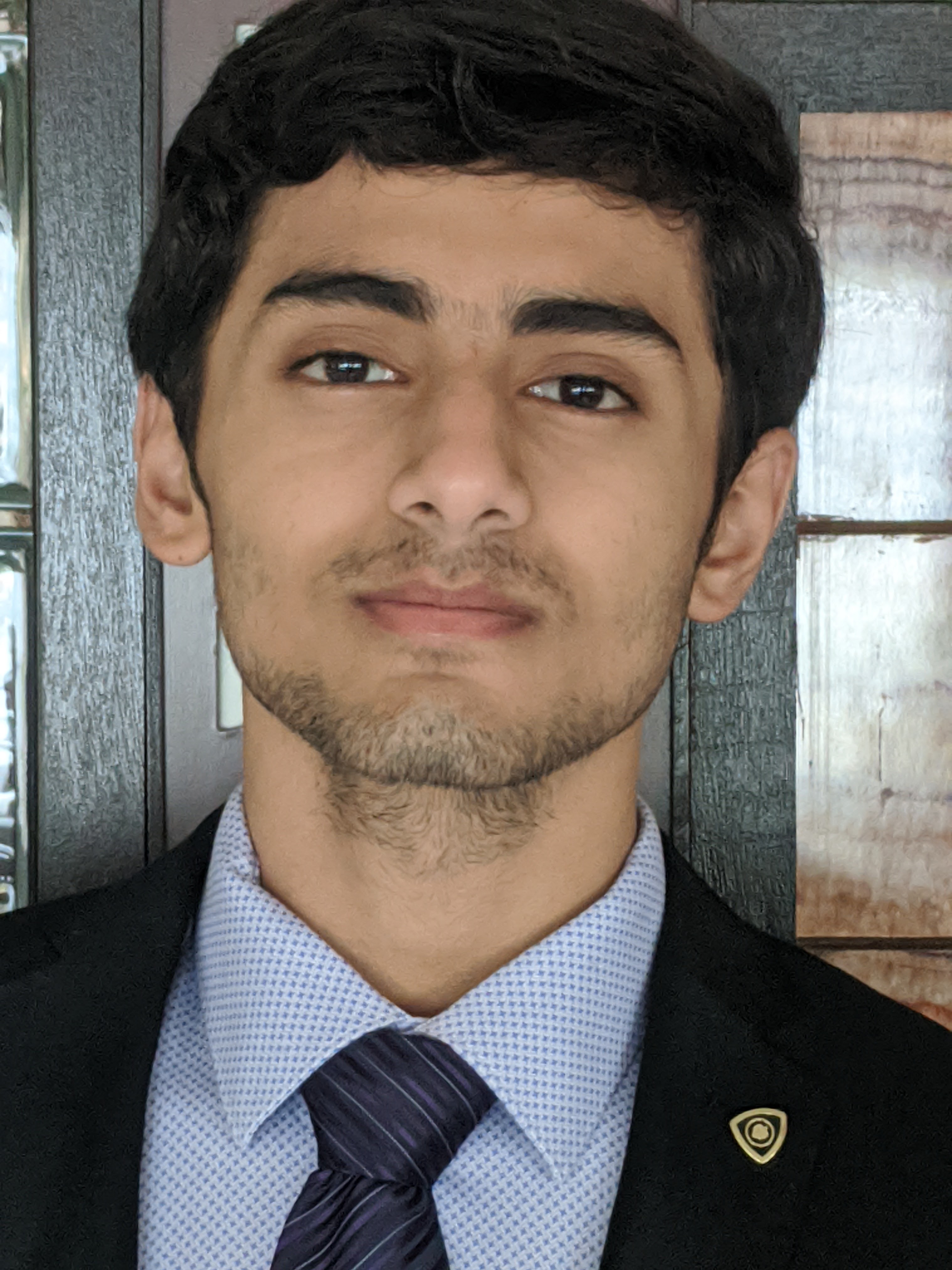
Title: Correlation between foot length and hand length and their use in estimation of stature and sexual dimorphism
Varun S. Pathak
BJ Government Medical College, Pune
Abstract
Hand and foot lengths are features that vary extensively within humans due to sex, stature and genetics. Correlations between hand and foot lengths are a prerequisite to identification in forensic investigation. Dismembered hands and feet or prints are commonly found evidences at crime scenes and mass disasters. This study aimed to find the correlation between hand length and foot length and to use these to estimate stature and sex.
Earlier studies in India have mostly examined these parameters in indigenous populations like the Rajputs, Gujjars and Vettuvars. Thus, this study checks if these results apply to a general population as well. This study was carried out on 400 normal, healthy individuals (200 males, 200 females) aged 18-23 years.
Hand length:- From interstyloid line to tip of the middle finger using a sliding caliper.
Foot length:- From heel to toe using a spreading caliper.
Height:- Stadiometer was used.
Significant correlation was found between hand and foot lengths of both sides in both sexes. Height significantly correlated with hand and foot length in both sexes. Correlation tests, linear and step-wise regression analyses were performed to generate equations to estimate height from hand and foot lengths in both sexes. Left foot length was found to be the best predictor of height. In-depth analysis of equations and results will be done in the presentation.
This data can thus predict the relative morphology of a person. It can also have ante-mortem uses during reconstruction of a mutilated extremity or while making prosthetic limbs.
Biography
Varun Sagar Pathak is a second year MBBS student currently studying at BJ Government Medical College, Pune. He had qualified for the Kishore Vaigyanik Protsahan Yojana(KVPY) which is a scholarship program funded by the Department of Science and Technology of the Government of India. He is also involved in teaching underprivileged students for the NEET examination in association with the NGO – Lift for Upliftment. He likes to participate in medical quiz competitions and seminars.
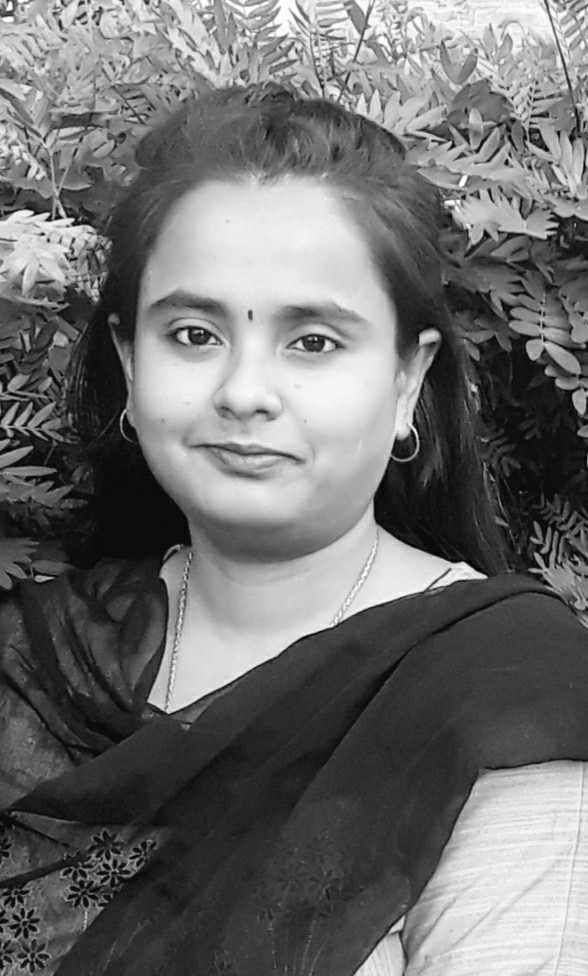
Title: RECENT ADVANCES IN FORENSIC ODONTOLOGY
Dr. Pooja Chakraborty
National Forensic Sciences University, India
Abstract
Gone are the days when teeth were only used to determine the age of an individual. The stream Forensic Odontology has expanded its wings not only to nab a criminal but also to make the bones speak. This is an evolving branch of science and has immense potential in the future. Though the science behind the subject still uses the age old principles but the techniques bar certainly has been raised. As there is lot of upgradation worldwide with the involvement of digitalization, the subject, Forensic odontology also went through a lot of upgradation to be what we see the subject today. Apart from determining Age, Sex and Race of the individual it can now be used to find out out diet details, occupation, migration history and cultural history of an individual. With the introduction of Artificial intelligence and 3D technology bitemark analysis, age estimation has undergone drastic changes. The newer methods like 2D and 3D photogrammetry is involved in better profiling of an individual. One of the most important aspect of odontology is to aid in identification, and with the use of softwares and digital databases, the success rate has improved. There are certain databases which is accessible both Intra and Inter countries, specially in cases of Mass Disasters where victims belong to different nationalities. This paper will mainly focus on the recent advances in forensic odontology and the future scope of the subject.
Biography
Dr. Pooja Chakraborty is a dental graduate and holds post graduation in Forensic Odontology from National Forensic Sciences University, Gandhinagar. She has been a good student throughout with excellent academic records as well as participating in various National and International conferences, both as delegates and as a participant. She is a enthusiastic and ambitious. She has co-authored few articles in International Journal and contributed a book chapter as well. She is voluntarily associated to Legal Firms and Forensic Institutes to gain exposure as well as promote her own subject in a bigger platform.
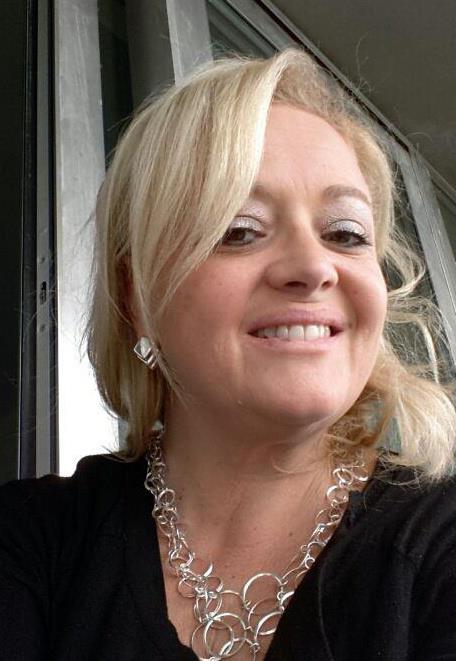
Title: Trafficking of Nigerian women
Plenary Talk
Dr. Concetta Grillo
Association of Women Forensic Experts, Italy
Abstract
The phenomenon of the different generations in Italy includes a number of young Africans. The age of victims is lowered more and more: one in five is a minor. Our country has become the sorting base chosen by the exploiters for the distribution of its actions on the international market, particularly in Northern Europe. The latest figures say that in the first five months we are still above 2000, in line with last year's flow, which had already recorded a 300% increase in arrivals of Nigerian girls on Italian shores. And 80% of them are in the hands of history. These are dramatic figures such that, crossing the data of the Interior Ministry on the landings of migrants in our country with those reported to be organized Oim and Save the children, they draw a phenomenon in vertiginous as tragic growth: the racket of the ever younger Nigerians who every year come enslaved by international organizations and feed a thriving racket of prostitution almost always on the streets that sends thousands of girls from Italy to France, Britain, Spain, Austria and even Finland are documented some recent investigations by Italian prosecutors that led to arrests of traffickers and maman. This was done through a documentary of about 8 minutes in English where you can see the interviews of people working with Nigerian girls and above all I managed through a series of permits to interview a girl victim of Trafficking who managed to get out thanks to projects funded by the Calabria region.
Biography
• Lawyer since 1998. • Obtained the title of CRIMINOLOGY 2011 University of Messina; • Since 2002 he has held the responsibilities of Honorary Deputy Attorney at the Vibo Valentia Public Prosecutor until 2010; • Since 2010 he has held the functions of Court Honorary Judge at the Court of Reggio Calabria Criminal Section; • Appointed in numerous training courses as a marketing lecturer, business organization, commercial law, civil law, law of navigation, criminal law and labor law; • Appointment as an expert criminologist teacher at the EIRA Center in Messina to the specialization course in Criminology • Appointment as a lecturer at the II level Master in Criminology and forensic science at the University of Messina Law in November 2015; PUBLICATIONS • National Criminology Magazine 2012: Project on the legality and re-socialization of deviant children. • Giuffrè editions June 2017: Cosimo Lorè; Society - Law - Crime. EVENTS • Speaker at the 16th International Conference organized by the Montessori School in India in October 2015. Relator from 4 to 5 March 2016 in Madrid at the 3 Congreso Internacional de Crimilastica y Criminologia at the Escuela Superior Criminalistica; • She participated in April 2017 in Dubai at the Emirates International Forensic Conference; • Delegate to the GCC Forensic Science Conference GCC DNA November 2017 in Abu Dhabi UAE and in Baharai in November 2019. • She attended the Congress of Forensic Criminology in London in March 2018. • She received the award as a woman in the professions for the prevention of gender violence from the Unesco Vibo Valentia club in April 2018. • Participated as a speaker at the seminar in Reggio Calabria April 2018 on the Trafficking of Nigerian Women. • She is working on a digital platform project for a CRIMINET national criminology course. • She participated in the international criminology conference in August 2018 in Lyon. . She received the award in Anassilaos Mimosa 2019 for documentary Traffiking in Nigerian Women. 13.09.2020
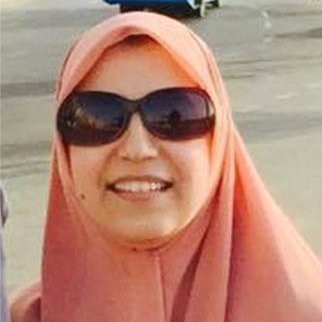
Title: Pattern of Acute Poisoning in a Sample of Elderly Egyptians
Plenary Talk
Prof. Rabab El Kelany
Tanta University, Egypt
Abstract
Acute toxicity is globally considered as a major health problem affecting different populations. The demographics of human population all over the world are completely different now from 100 years ago. Worldwide, the fraction of individuals aged more than 60 years increased from 9.2% in 1990 to 11.7% in 2013 and expected to reach 21.1% by 2050. Therefore, the danger of elderly poisoning is increasing all over the world, and the clinical profile of acute poisoning in the elderly is expected to be different from younger adults.
Hence, the aim of this work was to reveal the elderly patients aged more than 60 admitted to Toxicology Unite, Tanta Emergency University Hospital with acute poisoning throughout the period from 1st of January 2011 to the end of December 2017.
The age of poisoned elderly patients ranged from 60 to 80 years, with increased incidence of toxicity among males. More than half of the poisoned elderly patients were mild (53.1%) at the time of admission. Unintentional poisoning was more common with significant association between the manner of poisoning and the type of poison involved in toxicity. Eleven patients (11.2%) were admitted to the ICU; four of them (4.1%) needed mechanical ventilation, which ended eventually by death in all of the four cases.
Biography
Prof. Rabab El Kelany working as a professor in Forensic Medicine & Toxicology since 2013 at Tanta University, Egypt. Prof. Rabab El Kelany worked in Research Ethics Committee in faculty of Medicine since 2010 till now 2016. Prof. Rabab El Kelany worked as a trainer in TCIFLD center Tanta University. Prof. Rabab El Kelany worked in Quality center till the reach of faculty accreditation. Interested in upgrading my career in forensics, joining international conferences, interested also in medical ethics &malpractice

Title: Virtual rape and victim blaming. The language of violence between dominance and submission
Dr. Giuseppina Seppini, Dr. Iolanda Ippolito
Forum Lex Association, Italy
Abstract
The expression refers to the publication of photos of women, to expose them to insults or slutshaming in the comments.The comments take place within social channels, often covered by anonymity, where the pack shares autoerotic practices carried out on the photos of victims.Victim blaming, is the blaming of the victim for any act of violence. The expression tends to be used in reference to rape: people hold the victims responsible for the incident to the point of inducing them to blame themselves.What excites those who commit similar acts is not the sexual nature of the contents, but the lack of consent. The pack does not seek momentary excitement, but the exercise of power, within a collective ritual. And it’s in this dimension that the expression virtual rape takes on a real and painful connotation.In the language used there is an erotic component and a component linked to the concepts of dominance and submission.Dominance by those who propose to own the published images, which they believe to be their own for having recovered them from social networks.Submission by those who send photos of those with whom they have or have had some relationshipIt is a language representative of internalization of patriarchy, symbolic violence against women, which contains stereotyped behaviors.There are numerous issues at stake to counter the phenomenon: ethical-political, pedagogical issues, technical-IT education and an active involvement of the mass media, IT media and social media, capable of manipulating people's pre-established mental structures.
Biography
1 Giuseppina Seppini, RN, MSN, Criminologist, Forensic Analist, Facial Micro-expression Analist, expert in forensic psychology. RN, MSN,Vice-President and Scientific Manager National Association of Neuroscience Nurses (Italy).Director of the Piedmont Regional Office of the Forum Lex Association. Trainer and Speaker at numerous training events, National and International Conferences on issues related to gender violence, neurobiology and genetics of violence, analysis of verbal, non-verbal and paralinguistic communication, deception, linguistic representation of gender violence and contribution of Media, Hate Speech. Member of International Association of Forensic Nurses. Member of Italian Academy of Forensic Sciences, Section Legal and Forensic Nursing. Member of WAWFE. Adjunct professor of Research Methodology in Nursing and Midwifery, Master of Science in Nursing and Midwifery, Faculty of Medicine and Surgery, Catholic University of the Sacred Heart, Hospital of Divine Providence Cottolengo in Turin Italy; Adjunct professor of Theory and Methods of professional Management, and applicatios in Nursing, Master of Science in Nursing and Midwifery, School of Medicine of the University of Turin. 2 Dr. Iolanda Ippolito Criminologist - Police Officer Present President Association "Forum Lex – ", Rome (Italy) ▪ Headmaster and professor in Investigative Criminology for the Workshop in Juvenile Criminology ▪ headmaster and professor in Course of specialisation "Expertise in Investigative Techniques and Intervention Procedures in cases of Domestic Violence, Stalking, Feminicide, Bullying and Baby Gang Present Judicial Police Unit for Gender and Juvenile Violence Municipal Police Department in Naples (Italy) Responsible person of the Unit for activities of prevention, control and contrast and assistance to women exposed to the risk of violence, stalking and violence against children. ▪ Trainer in schools on awareness-raising prevention activities about gender violence, assisted violence, bullying, cyberbullying and web dangers, taking charge of reports and complaints relating to the aforementioned issues; ▪ referent of the Ministry of Infrastructure and Transport in the project “VI International Festival of Road Safety and Legality Arts" as expertise in the topics of Gender violence,bullying, cyberbullying and web dangers University teaching professional Università Suor Orsola Benincasa, Naples (Italy) Second level Master in Family Law about "Investigative Criminology in relation to Gender Violence and Domestic Crimes"
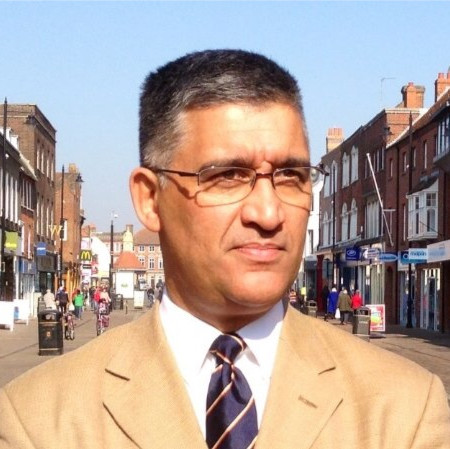
Title: ‘Sharks Must Keep Swimining To Stay Alive: The Case For Taking Criminology Out Of Theory And Into Practice’
Keynote Talk
Dr. Ruwan Uduwerage-Perera
University of East London United Kingdom
Abstract
As a criminal justice practitioner turned academic, the speaker is committed to developing an outcomes-oriented approach to the teaching delivery of criminology and is working on initiatives to turn the rhetoric and the theories into meaningful tactics that can be applied in the ‘real world’.
If Lombroso is still celebrated as the ‘Father of Criminology’, then the speaker suggests that perhaps it is time, as criminologists, to review our ancestral lineage. The speaker also challenges why in an increasingly globalised society do some criminology scholars choose to promote a predominantly male, European-centric outdated theories that have encouraged and led to greater misunderstanding and marginalisation that do not reflect the geographical and cultural roots of where the theories being applied?
History has shown us that there have been pioneers who have promoted a proactive approach, and the speaker has had the privilege and opportunity to work with such contemporary scholars and practitioners in the United Kingdom and India. Unfortunately, predominantly criminology as an academic discipline does not as a whole reflect the need for a preemptive approach to tackling deviance and criminality in many universities.
The speaker suggests that unless criminologists take the initiative and move beyond academia’s hallowed halls and the lecture theatre and take their knowledge, understanding and experience and become applied criminologists in the real world, seeking to reduce the causes of deviance and criminality and move with the times, they may well find that their days are numbered.
Biography
Ruwan Uduwerage-Perera is a former criminal justice practitioner and now an academic in the fields of criminology, criminal justice, and policing, with a wealth of advisory and lecturing experience in the United Kingdom, Europe and South Asian. Ruwan’s passion is to forge robust and meaningful links between academia, the criminal justice system and other bodies by reducing the mystic about criminology and developing practitioner academics within the workplace.

Title: Methodology and Analytical techniques for detection of Gunshot residue (GSR) to solve the felonies of crime scene: A Comparative study in Forensic Applications
Keynote Talk
Dr. Leena Kumari
SGT University, India
Abstract
The detection and interpretation of gunshot residue (GSR) play an important role in the investigation of firearm-related crimes. In this study, GSR samples were collected on the target cloth and paper at various distances to estimate the firing distance on target cloth materials by visual inspection, chemical enhancement and instrumental analysis. Results revealed that the analysis focuses on inorganic particles incorporating elements derived from the primer however, organic analyte were non-significant. IGSR analysis was performed using scanning electron microscopy coupled with energy-dispersive X-ray spectroscopy (SEM-EDX). GSR and mean size (0.26 µm) of the particles were measured.
Biography
Dr Leena Bhardwaj has completed her PhD in Forensic Odontology in collaboration of Central Forensic Science Laboratory, CBI, New Delhi. She is a dental graduate and completed her postgraduate in dental forensics. She has been working as Assistant Professor and Founder Head in Department of Forensic Science. She has published her multiple patents and publications in the area of forensics. She is also actively involved in research in academics and currently co-authoring the book on the concepts of adult learning in Indian Setting with Dr T D Dogra(Ex-Director,AIIMS,New Delhi).

Title: Range of fire estimation through the analysis of gunshot residue elemental trio (lead, barium, and antimony) distributed along the trajectory of a projectile by energy-dispersive X-ray fluorescence spectrometer: an experimental study
Maxwell Abedi
University of Cape Coast, Ghana
Abstract
Firearm examiners routinely analyse gunshot residue (GSR) on varied targets to estimate the range of fire. To date, no studies have been performed to estimate the range of fire through the analysis of GSR distributed along the trajectory of a bullet according to our knowledge. We, therefore, analysed GSR particles deposited along a bullet’s trajectory to estimate the shooting distance. We also evaluated the efficiency of energy dispersive X-ray fluorescence spectrometer (EDXRF) as an alternative valuable instrumental technique in the analysis of GSR particles. In this experimental study, two firearms of the same caliber; AK-47 assault rifle (7.62 × 39 mm) and Self-Loading Rifle (SLR) (7.62 × 51 mm) was employed for all test firing. Gunshot residues that were distributed along the trajectory of the bullet were collected and subjected to instrumental analysis by EDXRF. The simultaneous presence of lead (Pb), barium (Ba) and, antimony (Sb) which fixes the identity of GSR particles were present at a firing distance of 0 to 4 m. The detection and quantification of the elemental trio (Pb, Ba, and Sb) are doubtful at a firing distance of ≥ 5 m. It is, therefore, appropriate to collect and quantify GSR particles distributed at a firing distance of up 4 m away from the muzzle end. These findings are limited only to the firearms-ammunition used in the present study.
Biography
Maxwell Abedi holds a Master’s degree in Forensic Science with a specialization in Forensic Physics and Ballistics from Gujarat Forensic Sciences University, now National Forensic Sciences University. He has expertise in Gunshot residue (GSR) collection and analysis, range of fire estimation, firearm examination, tool mark analysis, fingerprinting, and trace evidence analysis. He is familiar with sophisticated laboratory instruments such as Scanning electron microscope with energy dispersive x-ray spectrometer, Energy dispersive x-ray fluorescence spectrometer, Atomic Force microscopy, Tool Scan, Video Spectra comparator, Stereomicroscope, and comparison microscope, etc.
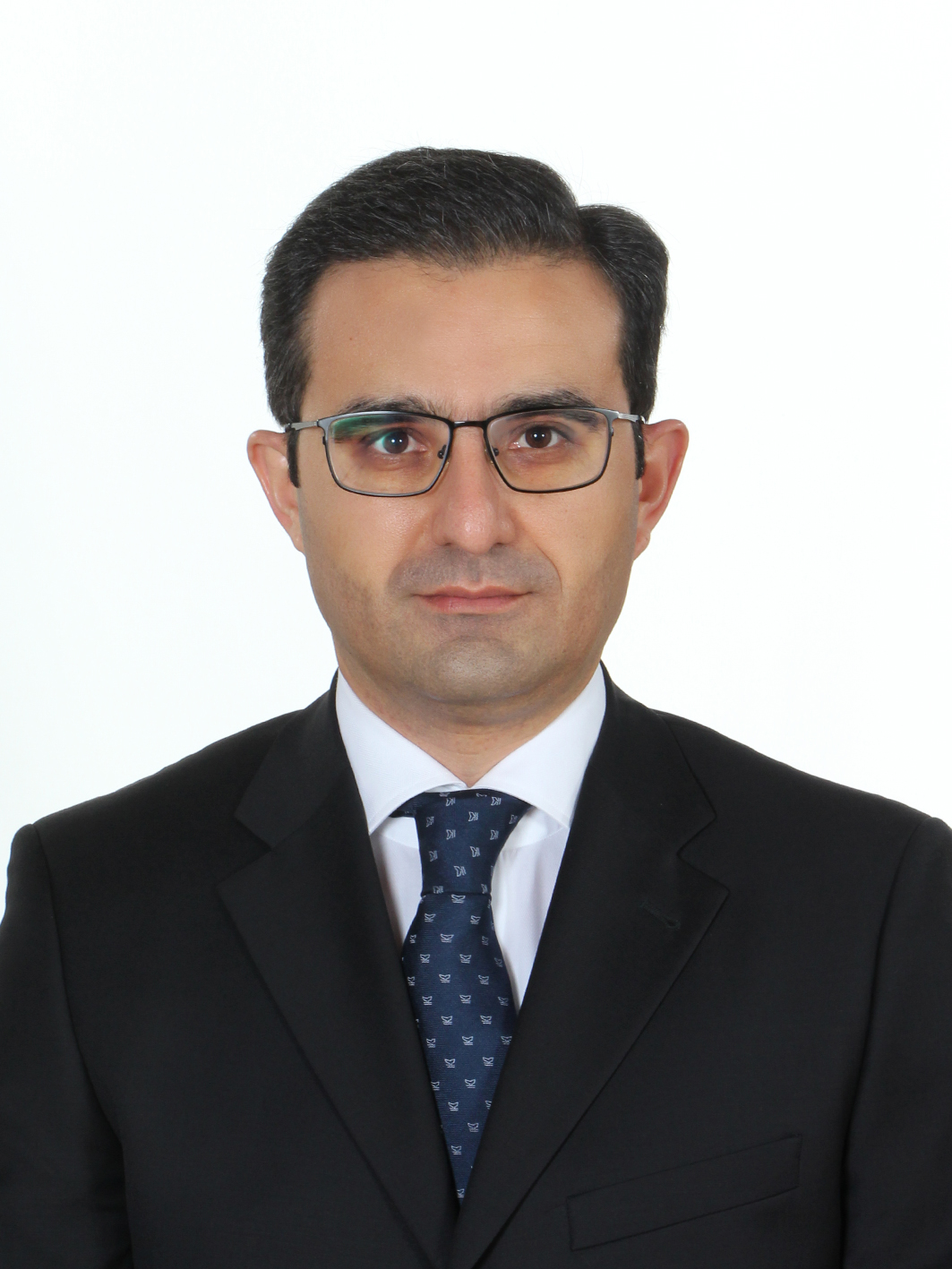
Title: Development directions of implementing forensic examination’s activity
Dr. Nail Abbasov
Forensic Science Centre of the Ministry of Justice of Azerbaijan Republic, Azerbaijan
Abstract
Adversarial principle in fair judgement proceeding has been postulated in Part 3. Of Article 14 of the International Covenant On Civil and Political Rights, and Part 3 of Article 6 of the Convention for the Protection of Human Rights and Fundamental Freedoms. The normative basics of the examination which may be carried out by private court experts on civil and administrative forensic proceeding in the legislation of foreign countries we are familiar with (the USA, Great Britain, France, Germany) and in the local legislation.
According to us, through enlargening the scope of practice mentioned, concerning it in to all judgement trials will lay the base for full establishment of adversarial principle. Thus, the foundation on creation of new relations that will boost for the development in examination proceeding. These relations can be named “adversary of experts”.
We think that the notion “adversary of experts(expertise)” will occupy a significant place in assessment of expert comment and provide the just competition.
Consider that presentation of the opportunity to obtain the expert comments not depending on court decision and forensic considerations about determining of examination only intends to positively impact the realization of adversarial principle of parties in fair judgement proceeding.
İt is hopeful case that in spite of fairly high development of scientific and legal basics of forensic examination, scientific studies aiming at further improvement of determination and procedural process of forensic examination are ongoing. Necessity of such studies is featured by improving the state’s law system, more developing of democratic basics of criminal judgement procedure. Moreover, conduct of reforms in legislation on the activity of forensic examination allows the full realization of such an important adversarial principle of fair judgement proceeding. Nowadays examination procedural practice has been developed to be applied immersely not only by the state, but also independent experts of non-governmental offices in a number of foreign countries.
As the practice shows that procedure of determining non-governmental examinations, their execution and using from their results, choosing the expert office or certain expert, their preparatory and specialty level, and such kind of problems are actual. So these unresolved issues, in its turn, can cause to bring about the differences in “governmental”and “non-governmental” examinations’ results, and complexities in legal assessment of competent expert comments, as well as violation of procedural rights of individuals having independent legal interest in case.
The outcome from all above-mentioned facts consists of that provision of accessibility of examination to the defense side is the condition of full establishment of adversarial principle. In itself, this will support the creation of adversarial principle in examination proceeding and comprehesive detection of objective truth. For this purpose we consider the implementation of necessary proceedings importantly in the direction of establishment of proper mechanisms, presence of registers about experts, provision of openness of the ways to be applied in order to check the expert comment, forming these comments’ content to the international unitary shape, fixation of study process in digital form.
Biography
Nail Abbasov has compleeted his PhD from the Forensic Science Centre of the Ministry of Justice of Azerbaijan Republic. He is Chief of the Firearms and Trace Evidence Department of Forensic Scence Centre. Also he is part time teacher of Justice Academy. He has published more than 10 papers in Forensic Scence field. He has some scientific works in fingerprints, face recognition.
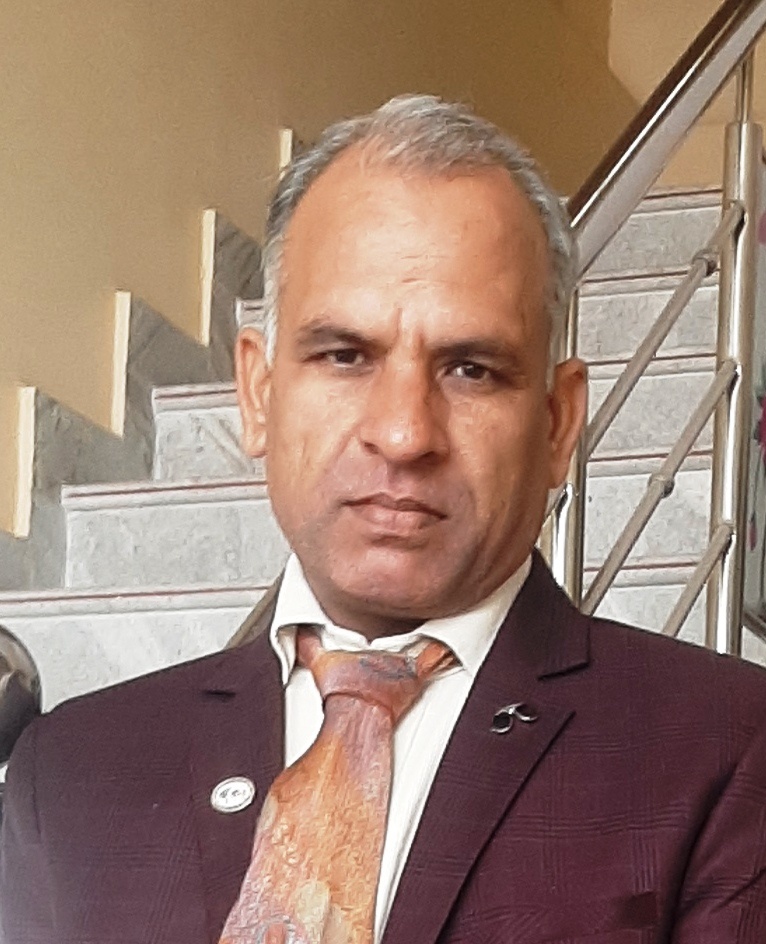
Title: FORENSIC LINGUISTICS: A LONG WAY TO GO IN INDIA
Dr. Mukesh Sharma
State Forensic Science Laboratory, Jaipur, India
Abstract
The field of forensic linguistics has been growing in prominence in the past couple of decades. Forensic linguists are involved in many areas that relate to crime, both solving crime and absolving people wrongly accused of committing crimes. Forensic linguistics (FL) provides answers to four fold of inquiry in investigative and legal settings in India and abroad : (i) Forensic Speaker Identification, (ii) Text Identification, (iii) Authorship Analysis and (iv) Forensic phonetics and phonology . These four fold redefine with the application of FL with their application and analysis for the next generation, as a tool for forensic investigation in speaker identification and audio authentication. Through this article, the author tried to explain the practical application of the FL in forensic science and justices.
Biography
Dr. Mukesh Sharma (M.Sc. Ph.D.), Senior Scientific Officer, Physics Division. He has completed his Ph.D. in the field of Material Science, now working as SSO, in Forensic Science. He has been involved in the field of forensic science since 2008. He has published more than 90 research articles in International/National Journals/ Conferences/Magazines. His fields of research are Trace evidence analysis, Forensic Physics, Cyber Forensic/Digital Forensic and Crime Scene Management. He has been nominated as Leading Scientist of the World 2010, from IBC, England and Asian Academics Achievers, New Delhi. His expertise in instrumental measurements on XRD, XRF, SEM and GRIM used in Forensic trace evidences analysis. Dr. Sharma is the fellow member and life member of National/International renowned societies as IANCAS (India), ISRP (India), ISOI (India), IXAS (Italy), IACSIT, (Singapore: Fellow Member : 80341901), ISCMNS (England) , SASCV (India) , UACEE (Thailand) and SDIWC (Taiwan) etc

Title: The determination of cortisol from human sweat and fingermarks using HighPerformance Liquid Chromatography (HPLC).
Abigail Anugengen
University of Lincoln, England.
Abstract
Fingermark which is usually interchanged with fingerprints is the mark deposited on a surface by an unknown individual while fingerprints are the prints collected in a more controlled manner from known individuals. They include the whole top joint of the finger and are created using either ink or digital imaging. Fingermarks have a key role in identification and crime detection. Three sweat glands are responsible for the production of sweat, they include eccrine, apocrine and apoeccrine glands. These glands spread throughout the whole-body surface where it freely opens on to the epidermal surface. The different glands produce sweat with different compositions. The three glands; sebaceous gland, eccrine and apocrine sweat glands are major contributors to the extent of fingermark residue. A method was developed and validated for the analysis of cortisol in sweat and fingermarks using High performance liquid chromatography (HPLC). Agilent Eclipse Plus C18, 5µm 4.6 x 150mm, a flow rate of 1.0 mL/min, temperature was ambient, the wavelength was at 254 nm and an injection volume of 10 µL is described. The effect of mobile phase composition, injection volume and the effect of liquid-liquid extraction was studied. A mobile phase of 10% acetonitrile in deionised water as solvent A and water as solvent B in a ratio of 40:60 was used and this allowed for a good separation of cortisol and the internal standard (6α-methylprednisolone) up to baseline. These results were also achieved by optimization the HPLC-UV/vis methods. The proposed method is reproducible, selective and sensitive, but less sensitive compared to other methods used for the analysis of cortisol recorded in previous studies. In addition to that, this method is less time consuming compared to Gas chromatography mass spectrometry (GC-MS) for the analysis of cortisol. The method was applied to human sweat and fingermark samples from volunteers after exercise to determine the concentration of cortisol. The possibility for the analytical procedure developed in this study to further our understanding of the analysis of cortisol has been shown
Biography
Abigail Anugengen is a biomedical and forensic scientist by profession and works in a biotechnology industry in Nigeria. She holds a BSc in Biomedical Science and a Masters degree in Forensic Science at the University of Lincoln, England. Abigail has more than 4 years of experience in biomedical practice and 2 years of forensic and QMS practice. She has also been involved in training scientists within Nigeria on quality management systems and the need for calibrating laboratory items while also being involved in forensic investigations. Abigail ia passionate about a bringing a positive change in laboratory investigations.
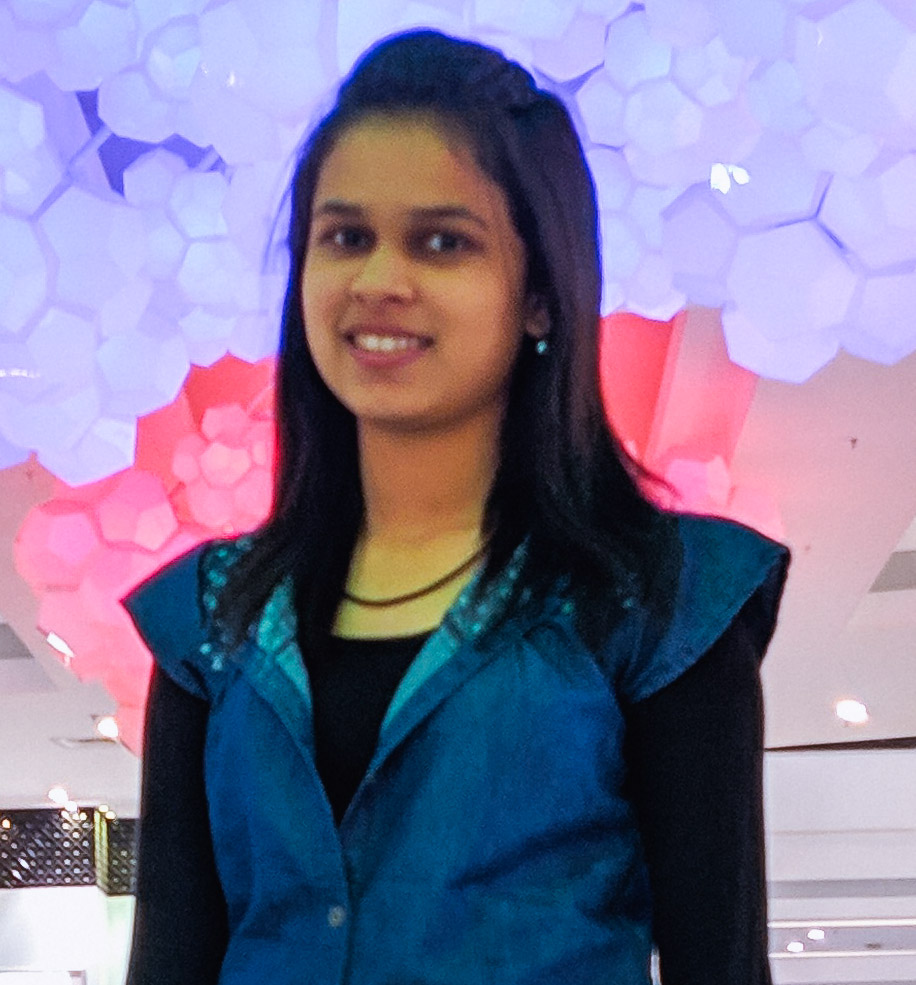
Title: Cyber Forensics in Payment Card Industries
Pallavi Kshirsagar
Deserve Cards, India
Abstract
The Cyberspace has brought the organizations closer to communicate within the network, and make their business expand via it and even to store the data of organizations up to some extent on the cloud. Whenever all of it was expanding the cyber experts created a layer of security to ensure there is no loss, transfer, breach or misuse of the genuine data or information stored. Meanwhile the forensics no longer was away from it and stepped in to search the techniques for the purpose of recovery of the data if it was lost and also to investigate techniques to trace the culprit in case of any breach or malicious activities.
The traditional investigative techniques had a process consisting of basic steps to approach the incident: identify the incident, secure the evidence and the scene, analyze the evidence and generate the report. After all of this is done all we have to do is patch the necessary systems and continue learning from the incident. The main principle to be maintained during this procedure was to carry out all the things in a forensically sound manner i.e. without losing the authenticity of the evidence. After every transaction made we must make sure that each and every details from the company side are protected and are ensured from any malicious activities from the outsider. On the other hand even the insiders can be threat to the organization as there are many non-technical as well as few technical people working in the company who are unaware of all the cyber attacks and there are higher chances of such people to fall prey to the social engineering attacks, phishing and vishing attacks, etc. Hence taking into consideration this scenario we must take care of creating an awareness among the employees of these events by properly educating them and creating necessary implementation in the company as well.
For this purpose the fin-tech companies set a wall of defense by setting up teams to avoid these incidents. The threat intelligence and the incident responders play a major role in all of it. The aim of this topic is to let industrialists and the forensic practitioners know about how they can be beneficial for the PCI industries as well.
Biography
Pallavi Kshirsagar is Post Graduated in Forensic Science from Gujarat University. Currently she is working as Security Engineer- Cyber Forensics with Deserve Cards. Apart from this she is always willing to share the knowledge she carry
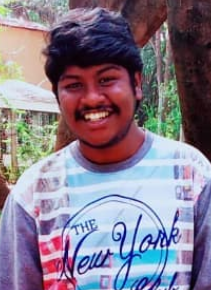
Title: Study on Lifecycle of Lucilia sericata on the Pork (sus scrofa domesticus) meat
Kevin Davis
Jain University, India
Abstract
Forensic entomology involves the interpretation of insect evidence in legal investigations. Insects recovered from a body, predominantly Dipteran flies can provide information on the conditions experiences by the body following death and in the cases of negligence prior to death. Flies from species Calliphoridae and Sarcophagidae are very important as they provide relevant evidence for estimating the Post-Mortem Interval based on the age of the oldest maggot. Insect succession and cadaver decomposition can be influenced by environmental variables i.e. temperature, humidity, season, time of the day which can either accelerate or delay the life cycle of the insect infesting a corpse. This study illustrates the lifecycle of Calliphoridae Lucilia sericata. The manual collection was followed alongside meteorological data and insect succession was noted down. Taxonomic keys were used as the criteria for the species identification. Knowing the errors caused by these factors can lead to determination of Post-Mortem interval precisely.
Biography
Kevin Davis graduated (Forensic Science and Technology) from St. Joseph’s College, India. Kevin Davis had done his master’s on Forensic Science and Technology at Jain University, India.

Title: Succession of Arthropods on White Rat Carcasses in Ile-Ife, Southwestern Nigeria
Aminat Adeola Adesina
Obafemi Awolowo University, Nigeria
Abstract
The forensic information provided by decomposition of small carcasses often goes unnoticed, even in advanced economies, due to frequent neglect. This paper reports the succession pattern of arthropod species that associated with carcasses of white rat, Rattus norvegicus (Berkenhout) (Rodentia: Muridae), in Ile-Ife, Southwestern Nigeria. Four bushy sites were chosen for the study and nine rat carcasses were placed at each site once a season for two seasons. The carcasses were monitored daily until the process of decay was over. The visiting and colonizing invertebrates were collected daily and identified. Immatures were also collected and reared in the laboratory till adult emergence for easy identification. The carcasses went through five stages of decay and the arthropods arrived in the order Diptera (early fresh stage), Hymenoptera (late fresh stage), Coleoptera and Dermaptera (active decay stage), and Araneae and Oribatida (advanced decay stage). Dipteran flies were the first arthropods to interact with the remains but ants were the only arthropods that associated with all the five stages of decay. A total of 9828 arthropods (4415 adults and 5413 immatures) belonging to six orders in two classes of the phylum were collected in the study. The proportion of faunal abundance was Diptera (75.1%), Hymenoptera (22.90%), Coleoptera (1.80%), Dermaptera (0.10%), Oribatida (0.08%), and Araneae (0.02%). Rate of decay was faster and faunal population was higher on carcasses during the dry season compared to the wet. Faunal population was also higher on carcasses placed in close proximity to the Zoological garden. The implications of these results on accuracy of estimated postmortem interval (PMI) and applicability in law were discussed.
Biography
Adesina, Aminat Adeola has completed her Bachelor’s degree from the department of Crop Production and Protection, Obafemi Awolowo University, Ile-Ife, Osun State, Nigeria. She has currently, applied for a Master’s degree program at the University of Ibadan, Ibadan, Oyo state, Nigeria. Her research interest is entomo toxicology an aspect of forensic entomology though she has carried out a work on the medico legal aspect of the field and got it published as a journal. Adeola believes research is the bedrock and a key tool needed in building a society we strive for. Also, research is not complete until the knowledge gained has been disseminated to the end users for a meaningful impact on the society. This has led to her commitment in combining both research and teaching in her community. She has worked as a teacher and an instructor in schools, and also, as an assistant at the Head of Department, Horticulture office, College of Plant Science and Crop Production, Federal University of Agriculture, Abeokuta, Ogun State, Nigeria.
About Us
Global Scientific Guild organizes conferences and webinars to promote quality research and real world impact in an atmosphere of true international co-operation between scientists, doctors, professors, practitioners, engineers and industry by bringing together the world class renowned personalities to discuss the latest developments and innovations at one common platform.
